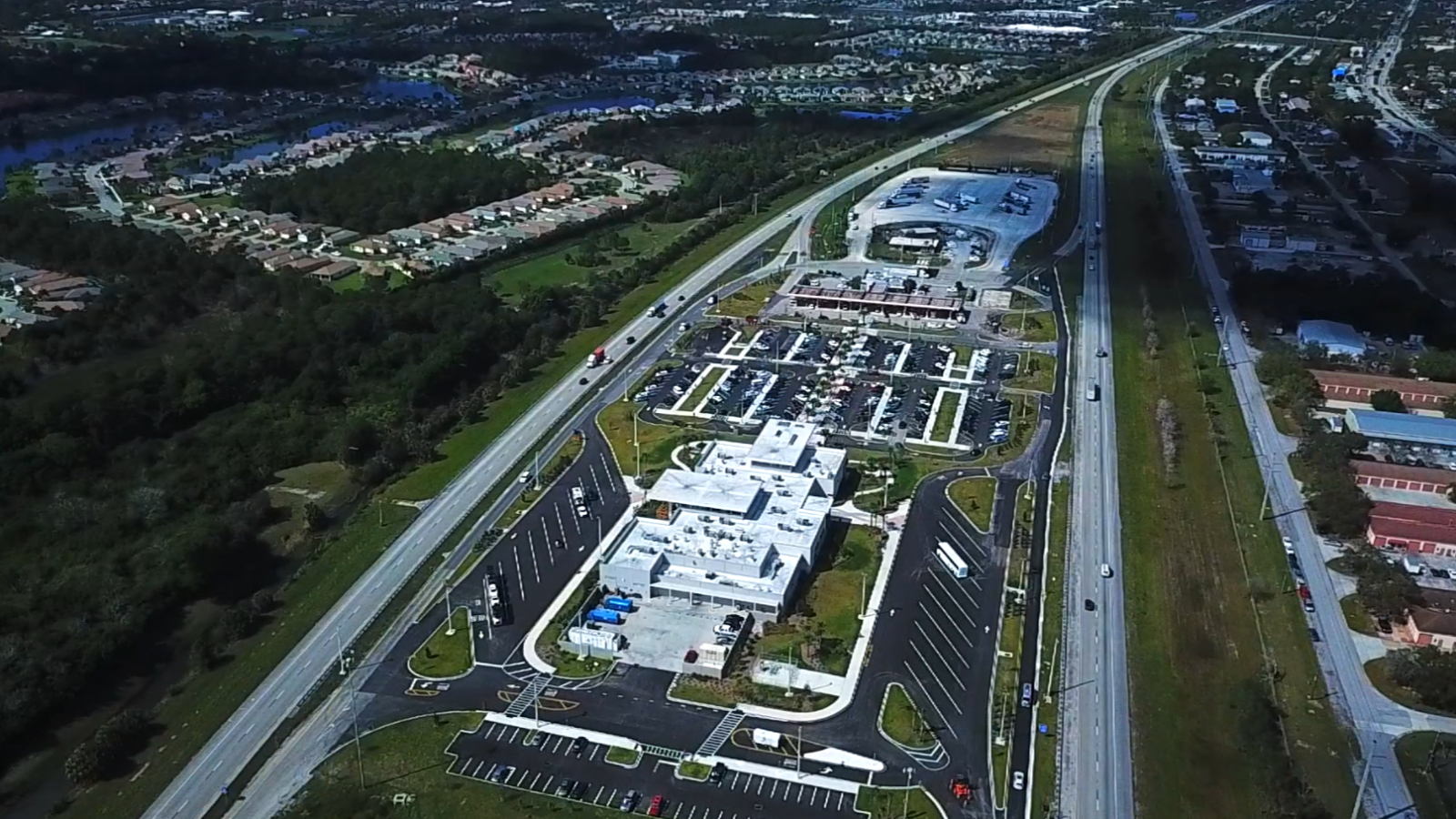Drainage solutions sound complicated, but they don’t have to be. However, it is imperative to manage excess water carefully in every asphalt pavement and concrete construction projects. For instance, standing water can cause issues such as pavement cracking and concrete weakening, creating the need for reinforced concrete in some cases. Commonly, pavement and concrete absorb storm water which makes it necessary to have more frequent maintenance processes.
Furthermore, it is important to keep in mind that in order to achieve top performance, the material has to be dry, since water makes it slippery and more prone to accidents. Nevertheless, the construction process sometimes is executed in high moisture or prone to heavy rains areas, which makes it mandatory to have a proper drainage system.
Normally, concrete begins to collapse by different natural factors, one being excess humidity. This causes the material to constantly change its internal temperature, contracting and expanding several times, causing the soil surrounding the pavement cracking until significant fissures begin to appear on its surface and concrete to shift, posing a danger to the pedestrians who walk on that area.
WHAT IS A ROAD DRAINAGE SYSTEM?
It is a system used in roads, driveways, highways, and other types of constructions, in order to control and avoid the excess of stagnant water both on the surface and in the underground layer of the structure itself. The area must be properly graded to allow the water to flow into the curb inlet and continue its way to a nearby catch basin.
It is important to design a drainage system that helps divert water avoiding moisture problems in any of the layers that make up the pavement. Drainage problems can reduce the life cycle of asphalt as well as affecting the safety of pedestrians and traffic.
In terms of costs, it is recommended to add a drainage system to your budget, since it will be a vital part of any project. Without it, there will be a need for way maintenance processes as well as more risks, liabilities, and a significantly reduced lifespan of the materials used. Water will cause cracks on the surface that could carry to major accidents in the long term.
WHY IS IT IMPORTANT TO HAVE A GOOD DRAINAGE SYSTEM?
Designing a good drainage system is important in order to secure an asphalt long term useful life and avoid a quick failure of the material.
The internal material of these plates in between moisture and the base layer will be weakened by increasing the pore pressure, and, at the same time, it could generate the material more likely damage by shearing. In addition, most soils expand when they are in constant contact with moisture that causes them both physical and structural deformities, as well as differential heaving (those cause pedestrian accidents and could get the owners involved legal issues).
Furthermore, a well-designed drainage system helps to keep the moisture balance inside the concrete structure, so they will not have mud that may appear by the moisture excess, nor will it be excessively dry until a possible crack by the rigidity.
However, excess moisture could cause the structure a premature wear, could potentially become an adverse safety condition and end up causing hydroplaning (the vehicle rides on water instead of pavement, limiting car control and ability to brake).
Another issue that arises as a consequence of a low quality drainage system with the stagnant water is that the mosquitoes that transmit dangerous diseases prefer these types of places to set their eggs and breed, this issue turns into a biohazard problem.
Finally, the design of a good drainage system could save the owners a lot of money and avoid legal problems, but more importantly save lives.
HOW IS A DRAINAGE SYSTEM INSTALLED OR REPAIRED?
Pavement is a waterproof surface, that’s why in the design process the engineers have to keep in mind a general suggested rule or standard regulations in order to build the highway, driveway, parking lot or the structure in question.
The main objective is to let the water flow onto the curbs, and this happens thanks to a suitable cross slope of at least 2% incline. After that, it is necessary to build a curb inlet knowing the width to allow the water flow through the water catch basin where it is stored to eventually go to big body waters such as rivers, pipes, ravines and even the ocean.
Depending on where the work takes place, it is essential to know about managing the water table level in order to avoid huge problems that may occur to the pavement internal structure. It is also important to add a proper under deck drainage system when the groundwater level is high in the soil where we are working to prevent moisture from affecting the inner layers such as the base and sub-base.
To solve this type of problem, we have to add a waterproof layer without any structural purpose between subbase and subgrade that controls and divert the water that ascents by pressure toward the pavement.
If you want to learn more about drainage, please check out this great and reliable
drainage contractor article.

